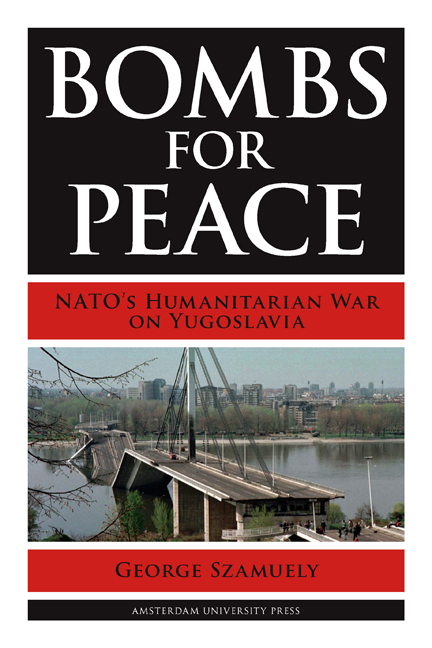Book contents
- Frontmatter
- Dedication
- Contents
- Acknowledgements
- Introduction
- 1 Yugoslavia: Destroying States for Fun and for Profit
- 2 In Search of the Good War: Bosnia: April 1992 to May 1993
- 3 Peacemaking v. Humanitarianism: Bosnia and Croatia: June 1993 to December 1995
- 4 Humanitarianism Fulfilled: Bosnia’s Unsafe Areas
- 5 Kosovo: The Denial of Sovereignty
- 6 Kosovo: The set-up
- 7 Kosovo: Standing up to the Yugoslav Goliath
- Conclusions: Ensuring Success by Lowering Standards
- Notes
- Select Bibliography
- Index
3 - Peacemaking v. Humanitarianism: Bosnia and Croatia: June 1993 to December 1995
Published online by Cambridge University Press: 12 February 2021
- Frontmatter
- Dedication
- Contents
- Acknowledgements
- Introduction
- 1 Yugoslavia: Destroying States for Fun and for Profit
- 2 In Search of the Good War: Bosnia: April 1992 to May 1993
- 3 Peacemaking v. Humanitarianism: Bosnia and Croatia: June 1993 to December 1995
- 4 Humanitarianism Fulfilled: Bosnia’s Unsafe Areas
- 5 Kosovo: The Denial of Sovereignty
- 6 Kosovo: The set-up
- 7 Kosovo: Standing up to the Yugoslav Goliath
- Conclusions: Ensuring Success by Lowering Standards
- Notes
- Select Bibliography
- Index
Summary
In June 1993, the ICFY-sponsored negotiations were chugging along at a not terribly brisk pace. The Vance-Owen plan had been consigned to the history books; its replacement was the so-called Owen-Stoltenberg plan. (Stoltenberg took over from Vance as co-chairman of the ICFY after the signing in Athens.) However, Owen and Stoltenberg were only the go-betweens; the real initiators of the plan were Serbia and Croatia.
The plan, first drafted in June 1993, appeared to be something of a return to the aborted Cutileiro plan. Owen himself referred to it as the “union of three republics” plan. Out went the policy of “integration” (a “heart-rending” moment for Owen): Bosnia was now envisaged as a de facto confederation among its three constituent nations, each of whom would have its own republic and its own constitution, executive, legislature, and judiciary. None of the three republics of Bosnia would be permitted to secede without the prior agreement of the other republics – the principle no one had bothered to observe during the dissolution of Yugoslavia. Sarajevo would be placed under u.n. administration for a period of two years; Mostar would be under the administration of the European Union, also for a period of two years.
Izetbegović and his supporters were furious. This was not the unitary state they had been promised. A “confederation is not a state,” seethed Ganić. When Milošević made the same argument in October 1991 in response to the Carrington plan, Serbia was threatened, and eventually slapped, with sanctions. Owen and Stoltenberg for their part insisted that the Muslims should be guaranteed at least 30% of Bosnia's territory and be granted access to the River Sava in the north and the Adriatic in the south. In addition, the u.n.- designated “safe areas” had to be included within the Muslim-majority republic, including the three – Srebrenica, Žepa, and Goražde – that were behind Serb lines in eastern Bosnia. The road linking the three eastern enclaves to the central area of the Muslim-majority republic would also be part of the Muslim republic.
The Serbs were only prepared to allow Goražde to be linked territorially to the Muslim-majority republic. The Muslims were indignant at the 30% offer, even though the area assigned to them included many of Bosnia's industrial regions.
- Type
- Chapter
- Information
- Bombs for PeaceNATO's Humanitarian War on Yugoslavia, pp. 191 - 274Publisher: Amsterdam University PressPrint publication year: 2013



